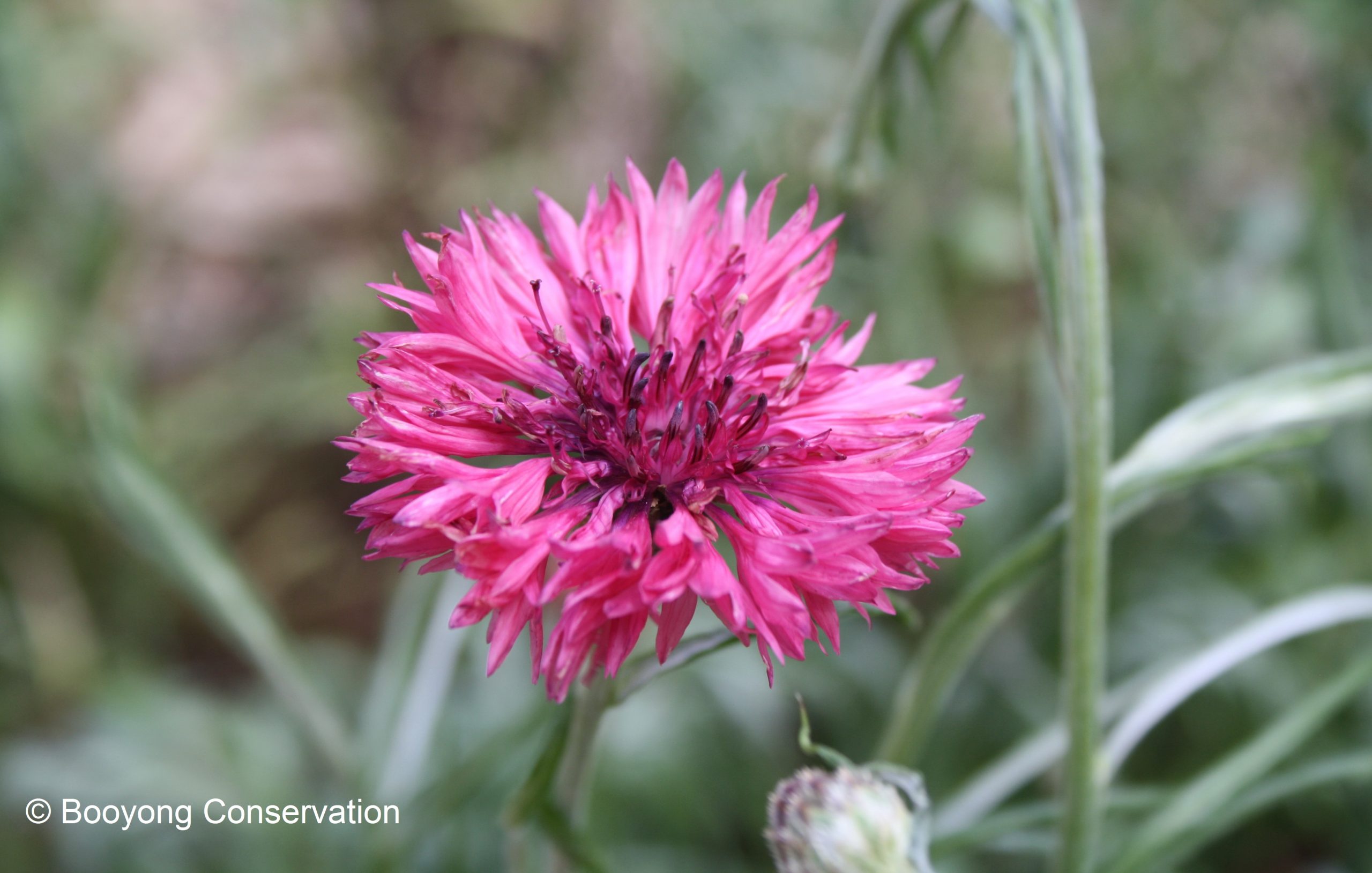Red Ball – Cornflower (Centaurea cyanus). These beneficial, edible flowers have grown very well at Booyong and provided us with lovely purple/hot pink flowers that we’ve happily shared with the local Byabarra cafe this morning!
Growing –’Red Ball’ has grown surprisingly upright in a clump like form. We planted them in the Ginger and Turmeric patch, and they have done extremely well. Despite being called ‘Red Ball’ this flower will often have reddish-pink flowers from early Summer to Autumn. ‘Blue Ball’ flowers are also quite common.
Likes to be planted in a sunny position in well drained and fertilised soil and will grow about 80cm high.
Care – Cornflowers are frost tolerant and are an annual plant that can be removed mid to late Summer. Due to the use of pesticides in farming the number of cornflower plants and flowers have reduced significantly.
 Pruning – Deadheading the flowers will prolong the season and provide many more.
Pruning – Deadheading the flowers will prolong the season and provide many more.
Companion Planting – Often planted sparingly (so as not to take all the water and nutrients) with grain crops like wheat, barley and oats as the plant germinates quickly and keeps the soil arable.
The nectar of the cornflower is sweet, so it will attract a variety of beneficial insects. Seeds are often enjoyed by finches and other small birds.
Pests and Diseases – The cornflower is generally pest free, however can suffer from powdery mildew.
Harvest – Harvest early in the morning to ensure they are vibrant and fresh. Flowers are popular and can be cut to cut and place in a vase about 16 weeks from sowing.
Historically, this flower was referred to as ‘Bachelor buttons’ as young English single girls wore this flower as a sign of availability.
They retain their colour when dried and are also used as a dried flower arrangement. Cornflowers can also be used to dye fabrics.
Propagation – Sew seeds direct or in seedling trays from mid- autumn till early Spring 3-5mm deep and approximately 30 cm apart. Keep moist while germinating.
Health Benefits – According to Edible wild food Cornflower tea is used to treat fever, constipation, water retention, and chest congestion. It is also a tonic, bitter, and liver and gallbladder stimulant and women take it for menstrual disorders and vaginal yeast infections. As always, we recommend you seek medical advise before ingesting tea for this purpose.
Eating – Cornflowers have a spicy clove-like flavour and can be eaten either raw or cooked. Like may edible flowers, are lovely placed on cakes or in salads. They can be used fresh or dry, and their petals can be mixed into cream cheese or flavoured butters. In addition, they can be dried and used in blended teas.
Petals can be steeped in clear alcohols like vodka or gin to produces a lovely coloured cocktail. That sounds like it’s worth a try. It would look lovely with a cornflower flower floating or frozen in an ice cube.
